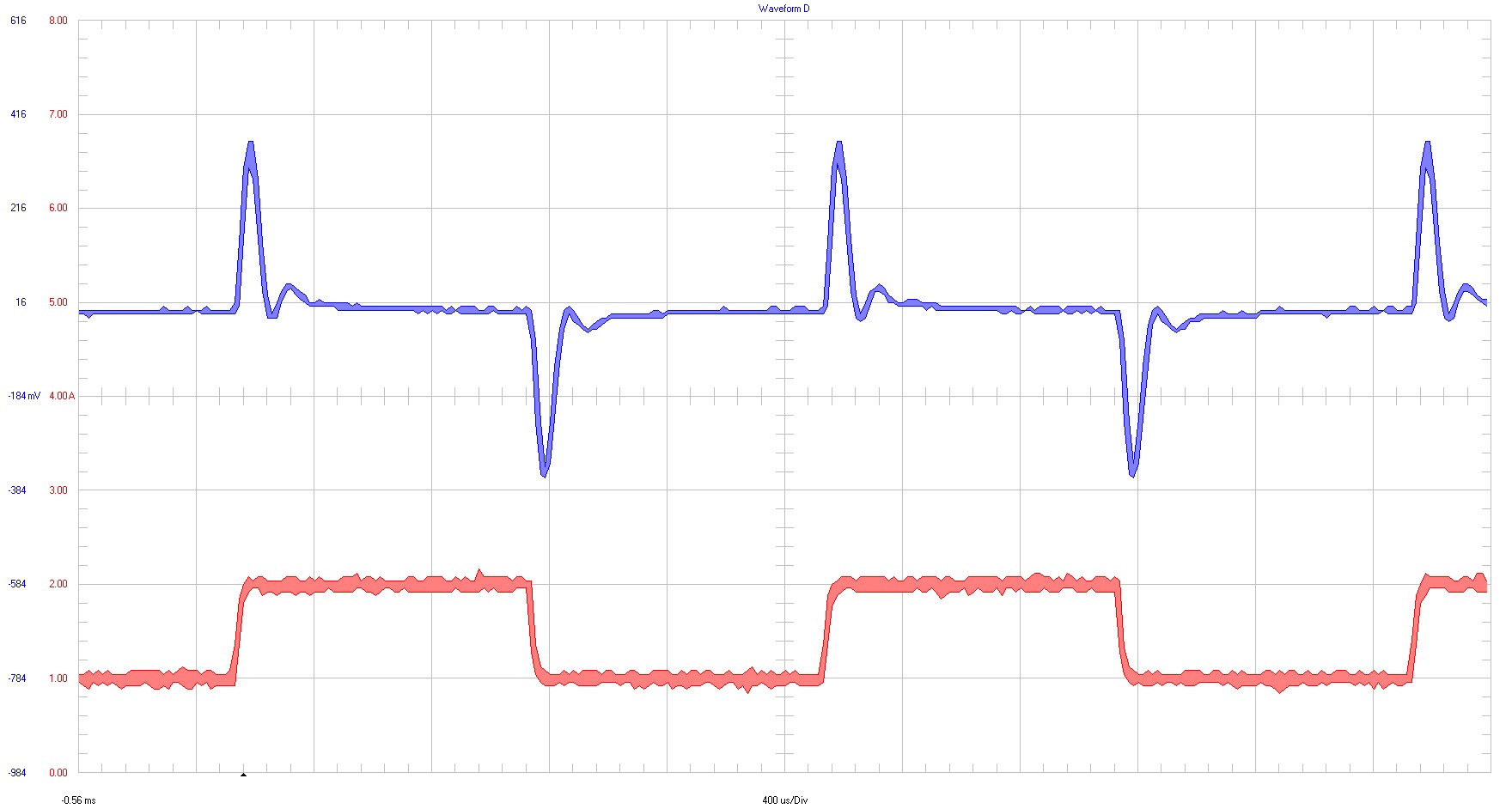TIDT280 May 2022
3.4.2 56-V Input Voltage

|
Ch1 ⇒ VOUT (AC) 200 mV / div 10-kHz bandwidth Ch2 ⇒ IOUT 1 A / div 20-MHz bandwidth 400 µs / div |
Figure 3-12 Load Transient 1 A to 2 A at
56-V Input Voltage